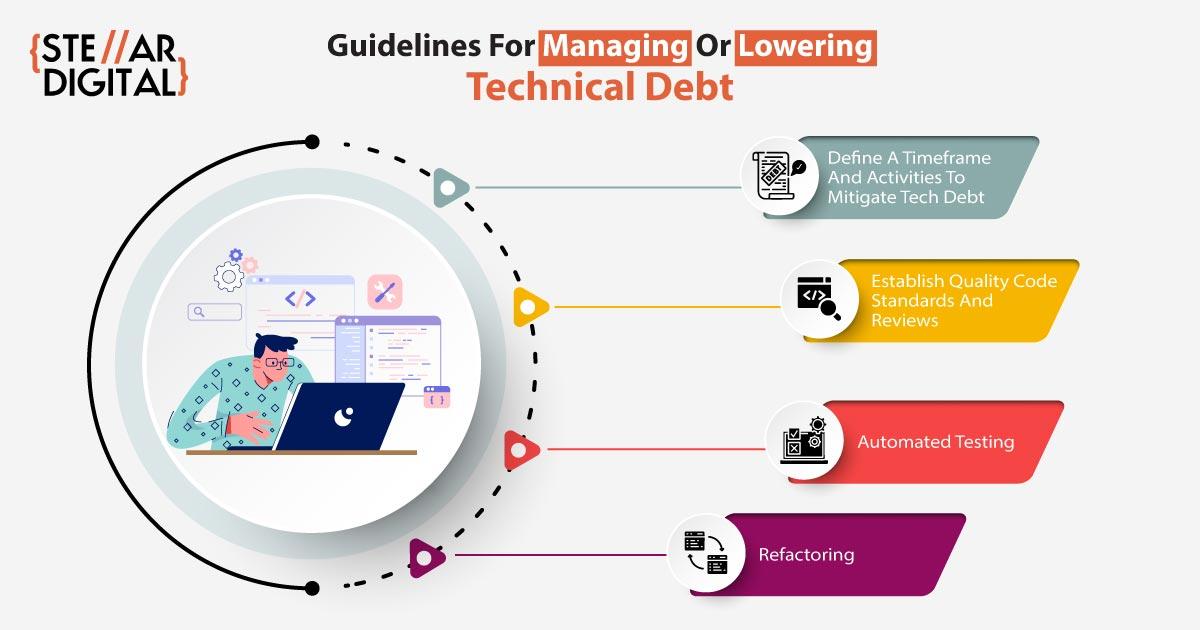In an era where technological advancement is the backbone of the financial sector, banks find themselves at a crossroads, grappling with the weight of legacy systems that hinder agility and innovation. As the digital landscape evolves and customer expectations soar, the burden of tech debt—those outdated software and practices that slow down progress—becomes increasingly palpable. Enter cloud solutions: a transformative force poised to bridge the gap between traditional banking operations and the digital future. This article explores how cloud technology can not only alleviate the challenges posed by tech debt but also enable financial institutions to foster a culture of innovation, enhance operational efficiency, and ultimately reshape their service offerings in a hyper-connected world. Join us as we delve into the potential of cloud solutions to redefine the banking landscape and unlock new paths to growth and customer satisfaction.
Understanding Tech Debt in Banking Infrastructure
Tech debt in banking infrastructure often accumulates when organizations prioritize short-term solutions over long-term strategic investments. This phenomenon can manifest in several forms, such as outdated legacy systems that require constant maintenance and lack the flexibility to adapt to new challenges. Some key contributors to tech debt include:
- Incompatibility: Existing systems may not seamlessly integrate with newer technologies.
- Compliance Pressure: Rapid regulatory changes can lead to hurried updates, compounding existing issues.
- Resource Constraints: Limited budgets and workforce can hinder the timely adoption of modern systems.
To effectively address these challenges, many banks are turning to cloud solutions, which offer a pathway to mitigate tech debt while enhancing operational efficiency. By leveraging the flexibility and scalability of cloud services, banks can:
- Streamline Maintenance: Reduce the burden of managing outdated hardware and software.
- Enhance Security: Benefit from advanced security measures and compliance support provided by cloud vendors.
- Facilitate Innovation: Enable rapid deployment of new services that can adapt to market demands.
| Cloud Benefits | Impact on Tech Debt |
|---|---|
| Cost Efficiency | Reduces unnecessary expenditures on legacy systems. |
| Scalability | Allows banks to only pay for what they use, minimizing waste. |
| Agility | Accelerates the development and deployment of new services. |

Exploring Cloud Solutions as a Strategic Response
In today’s rapidly evolving banking landscape, leveraging cloud solutions is not just a trend; it’s a necessary strategic response to the challenges posed by technology debt. By migrating to cloud-based infrastructures, banks can effectively mitigate risks associated with outdated systems and enhance operational efficiency. The flexibility and scalability of cloud technology allow financial institutions to adapt swiftly to market changes and customer demands. As a result, organizations can pivot from traditional legacy systems to more innovative solutions that facilitate enhanced data analytics, improved customer service, and streamlined operations.
Moreover, the transition to cloud platforms empowers banks to focus on their core competencies. Embracing cloud technology unlocks numerous benefits, including:
- Cost Efficiency: Reduced maintenance and operational costs.
- Accessibility: Enhanced access to data and services from anywhere.
- Collaboration: Improved teamwork through shared resources and tools.
As financial institutions prioritize digital transformation initiatives, the integration of cloud solutions stands out as a pivotal step in bridging the gap between traditional banking processes and the future of finance.

Implementing Best Practices for Cloud Migration
Embarking on a cloud migration journey requires careful planning and strategic execution to effectively navigate potential pitfalls. Key considerations include investing in a thorough assessment of current infrastructure, which helps identify applications and data that are prime candidates for migration. It’s essential to establish a clear roadmap for the migration process, enabling banks to prioritize their efforts and allocate resources appropriately. This ensures that teams focus on minimizing disruptions and enhancing system performance as they transition to the cloud. Some critical components to consider are:
- Data Security: Implement robust security protocols to protect sensitive information throughout the migration process.
- Compliance: Ensure adherence to regulatory requirements and industry standards while moving to the cloud.
- Scalability: Choose cloud solutions that easily adapt to growth and changing business needs.
- Change Management: Communicate changes effectively within the organization to ensure smooth transitions.
Once the planning phase is complete, the implementation stage can begin. A phased approach can minimize risks and allow for adjustments based on initial outcomes. Leveraging cloud-native features can also optimize operational efficiency and reduce long-term costs. Setting up performance metrics and monitoring tools during this stage supports ongoing evaluation and improvement of the migration process. Consider the following best practices:
| Best Practice | Description |
|---|---|
| Conduct Pilot Tests | Run initial migrations on less critical applications to identify issues early. |
| Foster Collaboration | Encourage cross-departmental collaboration to ensure alignment and shared knowledge. |
| Training and Support | Provide comprehensive training to staff on new systems to promote seamless adoption. |

Future-Proofing Bank Technology with Scalable Cloud Solutions
As banking institutions grapple with the complexities of legacy systems, the adoption of scalable cloud solutions presents a vital opportunity to eliminate tech debt. By migrating to cloud infrastructure, banks can achieve agility, cost-effectiveness, and innovation all while maintaining compliance and security. The transition to cloud systems positions banks to easily integrate emerging technologies such as artificial intelligence and machine learning, allowing them to enhance customer experiences, streamline operations, and drive strategic decision-making.
Embracing cloud technology not only mitigates the risks associated with outdated systems but also provides a framework for sustainable growth. Some key benefits include:
- Flexible Scalability: Cloud services allow banks to adjust their resources based on fluctuating demand.
- Enhanced Security: Leading cloud providers invest heavily in advanced security measures, ensuring data integrity.
- Improved Collaboration: Cloud-based solutions facilitate seamless communication and data sharing among teams.
- Cost Optimization: Transitioning to a pay-as-you-go model can significantly lower operational costs.
To illustrate the transformative potential of cloud solutions in the banking sector, consider the following comparison of traditional banking infrastructure versus cloud-enabled banking:
| Feature | Traditional Banking Infrastructure | Cloud-Enabled Banking |
|---|---|---|
| Initial Investment | High Capital Expenditure | Lower Operational Costs |
| System Updates | Manual and Time-Consuming | Automatic and Seamless |
| Data Recovery | Poor Backup Solutions | Robust Disaster Recovery Options |
| Regulatory Compliance | Difficult to Maintain | Streamlined Compliance Features |
In Retrospect
As financial institutions continue to navigate the complexities of an evolving digital landscape, the imperative to address technology debt becomes increasingly clear. Cloud solutions present a viable pathway, enabling banks to modernize their infrastructures, enhance operational efficiency, and deliver superior customer experiences. By embracing the cloud, banks can not only bridge the chasm of outdated technology but also position themselves as forward-thinking leaders in a competitive marketplace.
While the journey toward cloud adoption may be fraught with challenges, the potential rewards far outweigh the risks. It is a transformative step that not only alleviates the burdens of legacy systems but fosters innovation and agility. In a world where adaptation is key, the cloud stands out as a beacon of possibility, promising a future where financial institutions can thrive, unencumbered by the weight of their past.
as banks chart their course into the future, the integration of cloud solutions will be crucial in shaping a resilient and responsive financial ecosystem. With a strategic approach to technology debt, institutions can embrace new opportunities, ensuring they remain relevant in the ever-changing tides of the banking industry. The cloud is not just a solution; it is a bridge to a brighter horizon.
